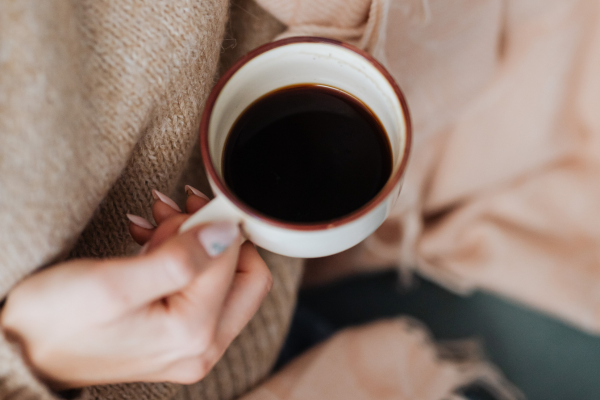With so many coffee options available today, choosing the best coffee beans can feel overwhelming. Whether you’re just starting your journey into home brewing or looking to refine your palate, selecting the right beans is essential to creating a cup that suits your personal taste.
This guide will help you understand the factors that influence flavor and how to pick the perfect coffee beans for your unique preferences.
Understand What Influences Coffee Flavor
Before diving into specific types of coffee beans, it’s important to understand what affects their taste. The main elements include:
- Origin (country and region)
- Variety of the coffee plant
- Processing method
- Roast level
- Freshness
Each factor plays a role in how your coffee will taste — from fruity and bright to bold and chocolatey.
Start with Roast Level
One of the easiest ways to narrow down your coffee preferences is by choosing the right roast level. Here’s a breakdown of the three main types:
Light Roast
- Flavor Profile: Fruity, floral, acidic
- Body: Light
- Best For: Pour-over, cold brew
- Ideal If You Like: Bright, tea-like flavors
Medium Roast
- Flavor Profile: Balanced, sweet, nutty
- Body: Medium
- Best For: Drip coffee, French press
- Ideal If You Like: Versatile, smooth coffee with a touch of acidity
Dark Roast
- Flavor Profile: Bitter, smoky, chocolatey
- Body: Full
- Best For: Espresso, French press
- Ideal If You Like: Strong, bold coffee with low acidity
If you’re unsure, start with a medium roast. It’s the most balanced and widely appreciated.
Consider the Origin of the Coffee Beans
Coffee beans from different countries and regions have distinct flavor profiles. Here are a few popular origins and what to expect:
Ethiopia
- Notes: Bright, fruity, floral
- Best For: Pour-over, light roast lovers
Colombia
- Notes: Sweet, nutty, balanced
- Best For: Drip coffee, everyday brews
Brazil
- Notes: Chocolatey, nutty, smooth
- Best For: Espresso, milk-based drinks
Kenya
- Notes: Berries, citrus, wine-like acidity
- Best For: Cold brew, pour-over
Sumatra (Indonesia)
- Notes: Earthy, spicy, bold
- Best For: French press, dark roast fans
Try a few different origins to see which flavor profiles resonate with you. Some roasters even offer sample packs for beginners.
Know the Bean Variety
While it’s more of an advanced detail, understanding bean varieties can help refine your preferences over time. The most common types are:
- Arabica: Known for its smooth, sweet flavor and subtle acidity. It’s the most widely consumed.
- Robusta: Stronger, more bitter, and higher in caffeine. Often used in instant coffee and budget blends.
- Liberica & Excelsa: Less common, with unique flavor profiles — often fruity or smoky.
For most people, Arabica is the best place to start.
Pay Attention to the Processing Method
How coffee beans are processed after harvest also impacts flavor:
- Washed (wet-processed): Clean, crisp flavors with higher acidity
- Natural (dry-processed): Fruity, sweet, sometimes wild or fermented notes
- Honey Processed: A balance between the two, with body and sweetness
Washed coffees are often more predictable. Natural and honey-processed coffees offer more experimental flavors.
Choose Whole Beans Over Ground Coffee
Whole coffee beans retain their freshness much longer than pre-ground coffee. Grinding just before brewing makes a noticeable difference in flavor.
Why it matters:
- Ground coffee loses aroma quickly
- Whole beans allow better control over grind size
- You can adjust brewing to suit your taste
If you don’t already have a grinder, consider getting a burr grinder — it provides even, consistent results.
Check the Roast Date (Not Expiration Date)
Freshness is key when choosing the best coffee beans. Always look for the roast date, not just the expiration date.
Best practice:
- Use beans within 2 to 4 weeks of roasting
- Avoid beans without a visible roast date
- Store in an airtight container away from light and moisture
Match Beans to Your Brewing Method
Different brewing methods bring out different aspects of the coffee. Here’s how to pair them:
| Brewing Method | Ideal Bean Characteristics |
|---|---|
| Drip Coffee | Medium roast, balanced acidity |
| Espresso | Medium to dark roast, rich and bold |
| French Press | Coarse grind, full-bodied, earthy or nutty |
| Pour-Over | Light roast, complex and fruity |
| Cold Brew | Medium to dark roast, low acidity, chocolatey |
Choosing beans based on your preferred brewing method ensures the flavors come through in the best possible way.
Support Local Roasters
Buying from local or specialty roasters means:
- Fresher beans
- Greater transparency about sourcing and processing
- More chances to discover small farms and rare varieties
It also allows you to ask questions and get recommendations based on your taste preferences.
Final Thoughts: Let Your Taste Guide You
Choosing the best coffee beans for your taste isn’t about chasing trends — it’s about discovering what you love. Start simple, keep notes on what you enjoy (roast level, origin, flavor), and build your coffee journey one cup at a time.
With a little experimentation and an open mind, you’ll not only find the perfect beans — you’ll also develop a deeper appreciation for every sip.

